As an advocate for urban lifestyle and mass transit, I absolutely love Japan’s train systems.
As a temporary visitor, though, I find them to be also headache-inducing. Among our destinations, between every point A and point B, there were at least two train routes, sometimes operated by different companies. From there, there were different train speeds (local vs. express), special train cars (first class, women only, reserved seat, etc), a la cart pricing (base fare, express fare, seat assignment fare), and unlimited passes (various coverage areas and duration options). As if that’s not complicated enough, you can use a credit card to buy certain tickets but not others. The number of ways to ride around town for a few days is vast, and the range in prices can be huge.

Train
Maye it’s not a big deal to the happy-go-lucky folks who just hand over money when asked and don’t think twice. But I like to optimize. Even before I understood all the rules, it became clear that a good strategy would save not only a substantial amount of money, but also time and stress from repeatedly buying tickets. I eventually figured out how to minimize our expenses while reaching every point of interest, but it’d require a massively inconvenient order of itinerary. We resorted to Plan B.
NARA
Covering a bulk of our train rides in Japan was the 4-day JR Kansai Area Pass, not to be confused with the JR Pass or JR Kansai Wide Area Pass. We reached both castles with it, and we used it to visit Nara.
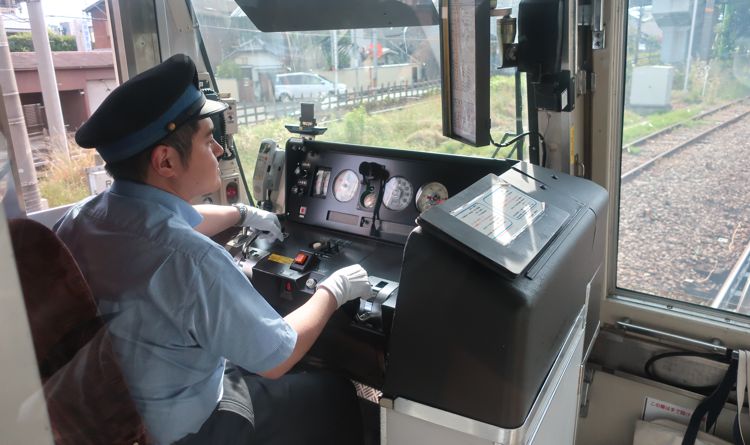
Train to Nara
Another train route connected Osaka to Nara more directly and let you off closer to Nara Park. We decided to go with JR mainly because the Kansai Area Pass included free bicycle rental. We picked up these simple and convenient vehicles right at the train station, and could not recommend it enough. Sure we could have covered that morning’s six miles on foot, but would we be left with any energy to enjoy the remainder of the day? At the very least, though, it was so much fun riding a bike in Nara.
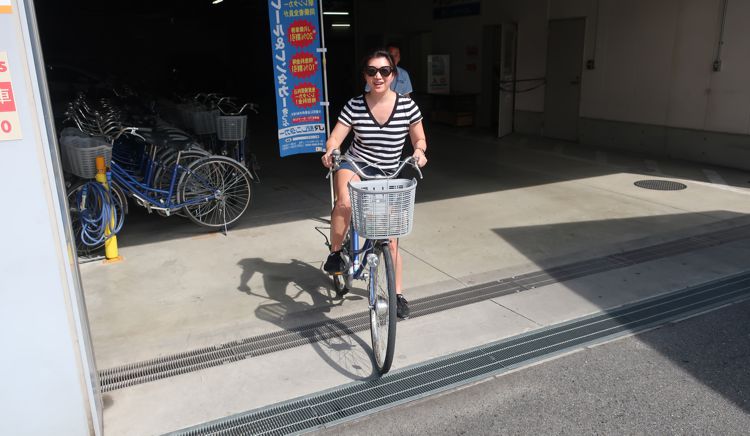
“Mamachari” = mom’s bike
Nara is an ancient capital of Japan with rich cultural heritage. What draws lots of visitors, though, is it being a gigantic petting zoo. Deer in Nara Park gets more love and fame than any of the UNESCO-recognized temples. While they are technically still wild animals, they really are as domesticated as most people’s dogs. Not only is feeding them encouraged, you’d find a vendor every 50 yards selling official deer crackers. Presumably those are a significant source of income for the park.
Having lived for years on the American East Coast, we thought of deer as pests and road kill. Neither of us came here particularly excited about them. However, interacting with them brought a completely different perspective. We had so much fun, and this was easily the most memorable part of the trip.
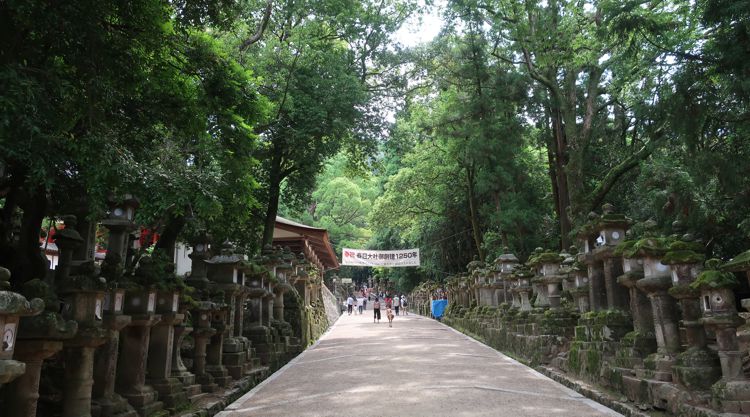
Lantern-lined path to Kasuga Taisha 春日大社, a major Shinto shrine
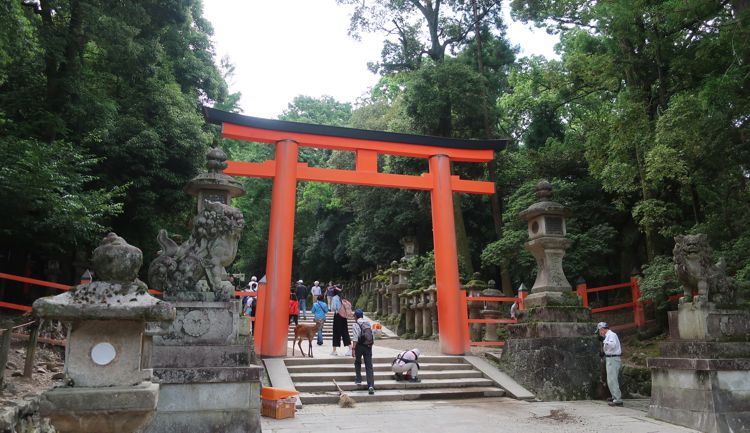
Entrance to Kasuga Taisha 春日大社
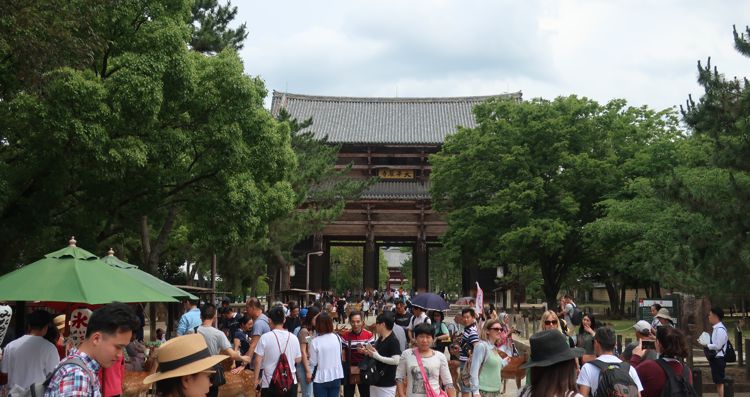
Entrance to Todai-ji 東大寺, the most famous Buddhist temple in Nara
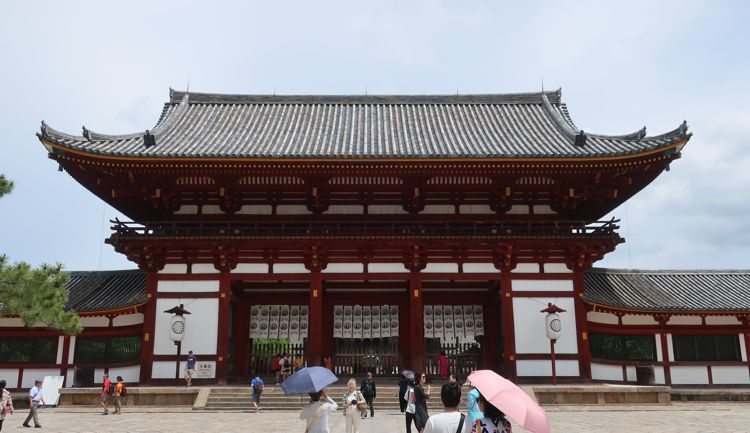
Todai-ji 東大寺. We contemplated about going in briefly and decided not to battle the buses loads of domestic and foreign visitors
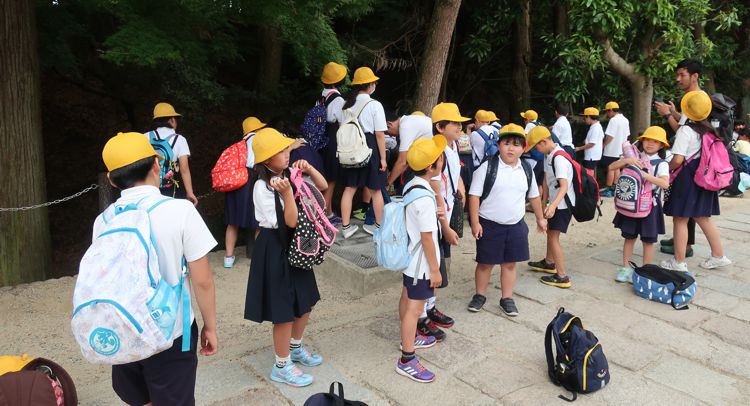
Japanese kids on field trip. Totally reminded me of my elementary school
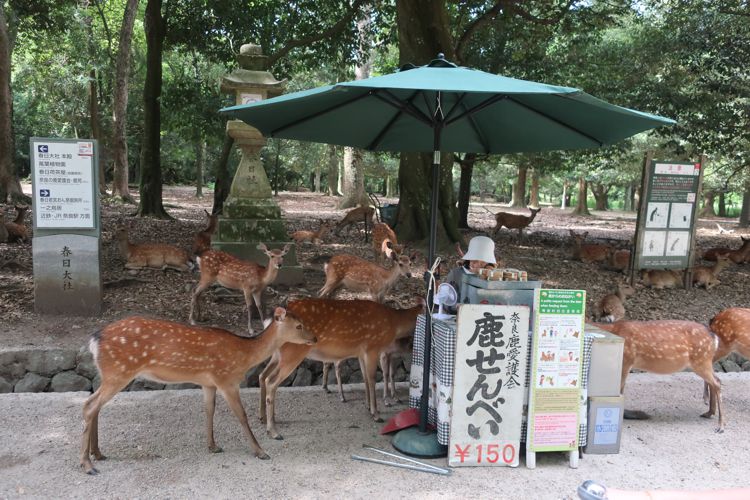
And this is Nara’s main attraction…
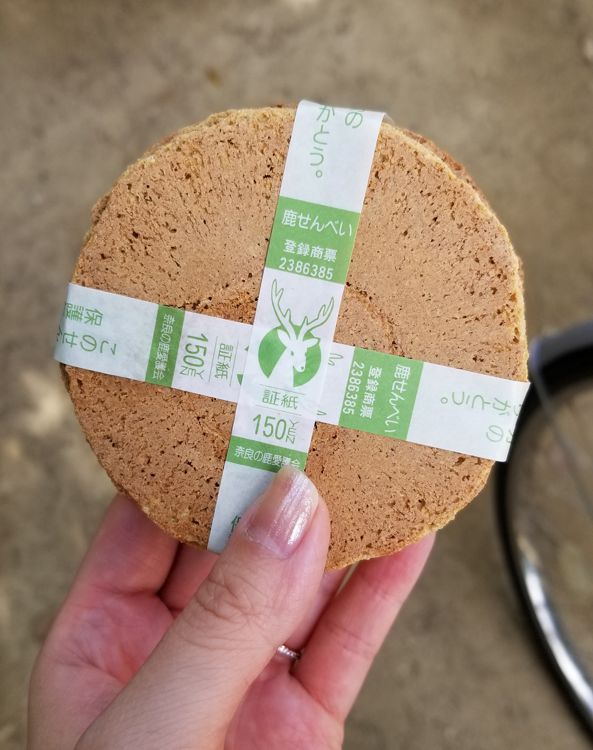
$1.50 for a package of 10 crackers doesn’t feel like much at first.
Then you realize that you’re paying Walgreen’s human snacks prices for something that is probably tasteless
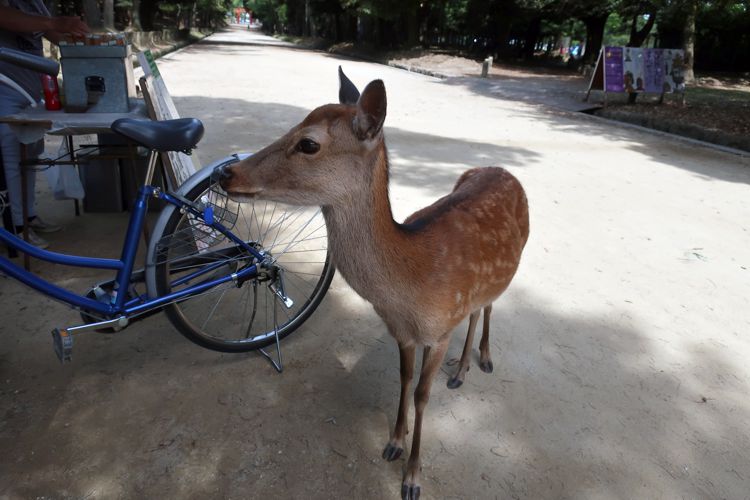
Here’s a patient little puppy…
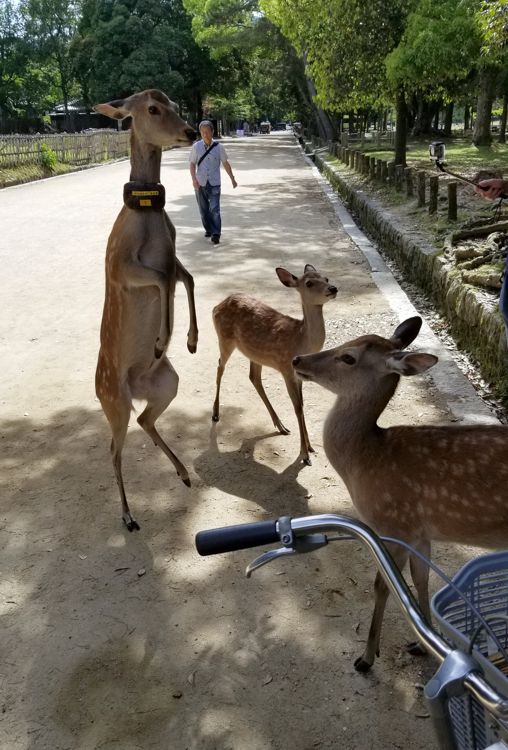
And here’s a hungry beast who will totally kill anyone who gets between him and his crackers
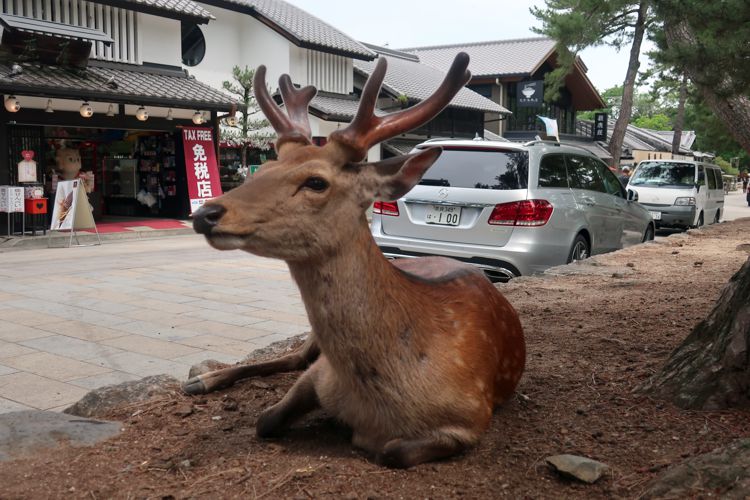
An incredibly deer-looking deer

Buying crackers at the more crowded touristy spots was a bad idea. These three relentless animals bit and head-butted me nonstop
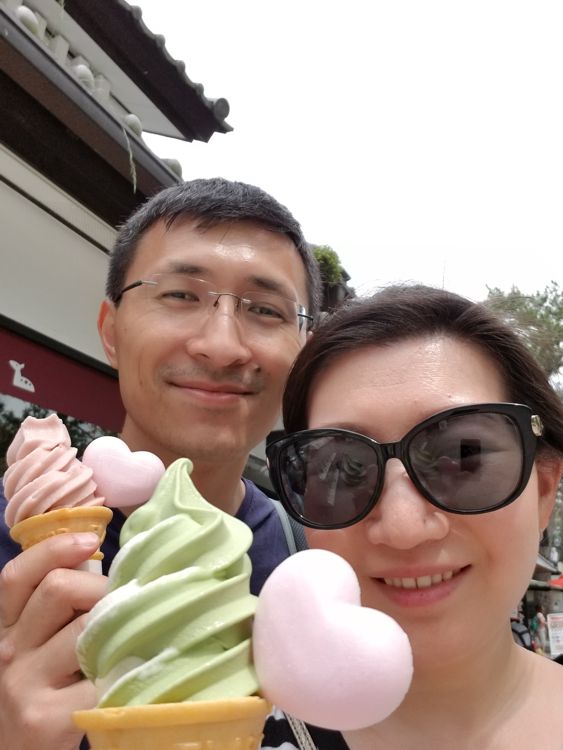
Ice cream break!!!
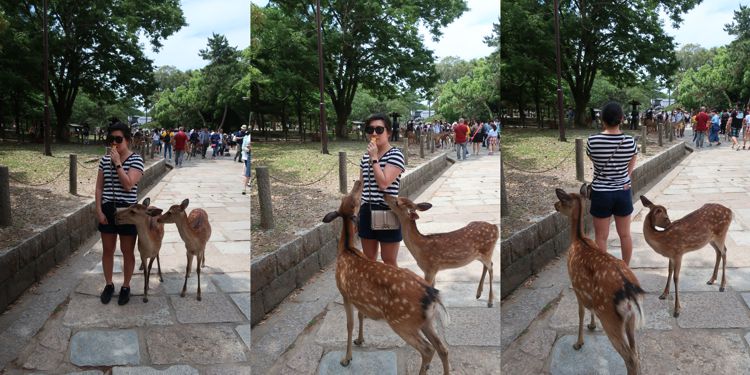
How a professional New Yorker handles solicitation
KAIYUKAN (OSAKA AQUARIUM)
The aquarium was, both of us agree, reserved to be the highlight of this trip.
We love aquariums and had already visited a dozen around the world. This particular one in Osaka remained high on our bucket list for years because of its reputation as (formerly) the world’s largest. Before the one opened in Atlanta, it was the only aquarium to house whale sharks. And of course, whale sharks are the world’s largest fish.
Osaka Metro sells three kinds of special passes that combine unlimited subway rides with certain tourist attractions around the city. The more popular Osaka Amazing Pass didn’t meet our needs, but the Osaka Kaiyu Ticket was perfect. It includes a single-day subway pass and admission into the aquarium, priced barely higher than the aquarium admission itself. Though you have to buy it at a subway station, where no credit card is accepted.
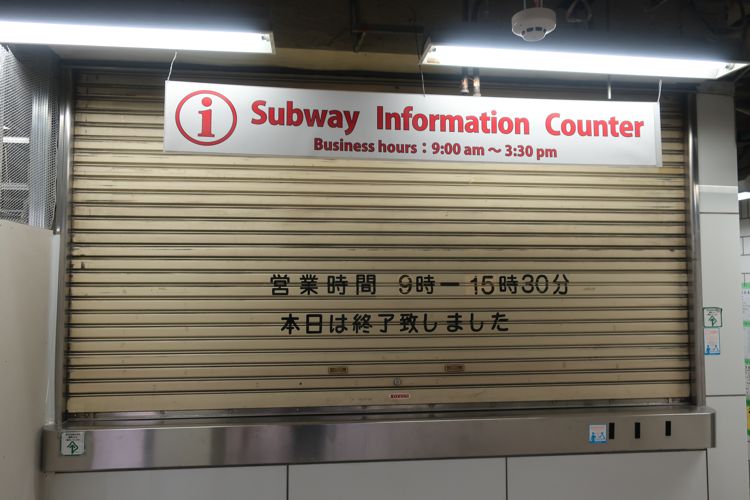
Umeda Station ticket counter, 3 minutes before opening
In general, zoos and aquariums in Asia fall behind their American counterparts in their (apparent efforts to) animal care and educational components. Exhibits tend to look like mere containers rather than faux-natural habitats, and less space tends to be allotted per animal. Signage is often more sparse and shallow, and you’d struggle to find anything related to conservation.
It was a mistake to think of Kaiyukan 海遊館 as a world-class aquarium and then get disappointed. Should’ve gotten clues from its name, which translates roughly to “ocean amusement museum”. Whereas Monterey Bay Aquarium and its peers are on a mission to educate the public and raise all sorts of awareness regarding our planet, Kaiyukan mainly focused on getting its visitors to see cool stuff and buy stuff in the gift shop.
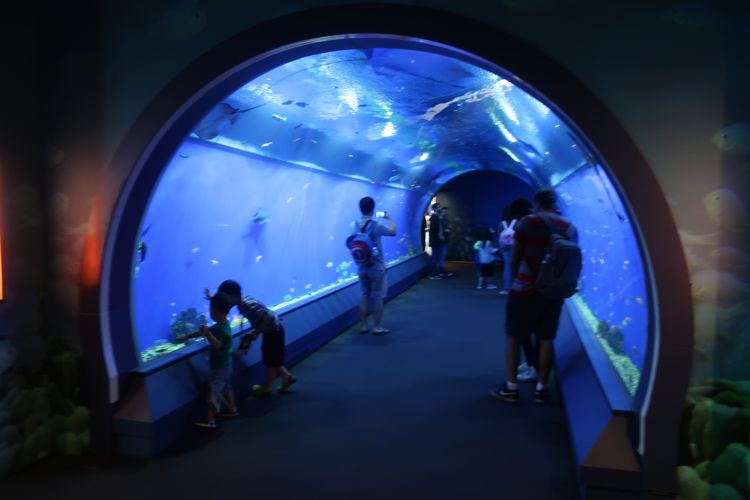
The entrance arch was the absolute low point of the visit, and by far the saddest among similar tunnels around the world.
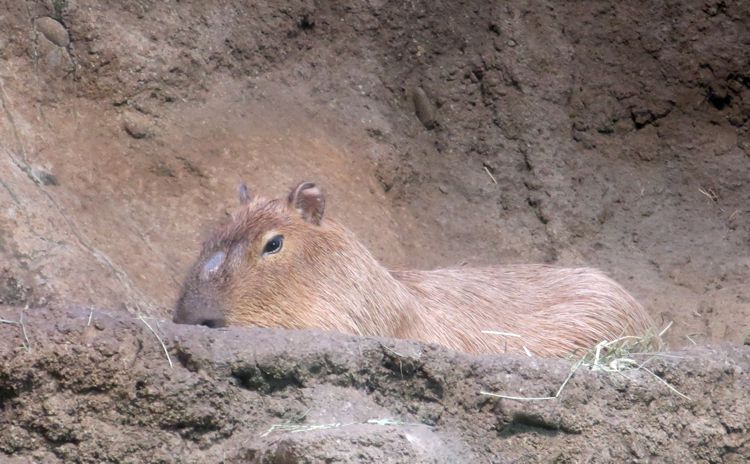
It was unclear why this aquarium had a random capybara, but it was cool.
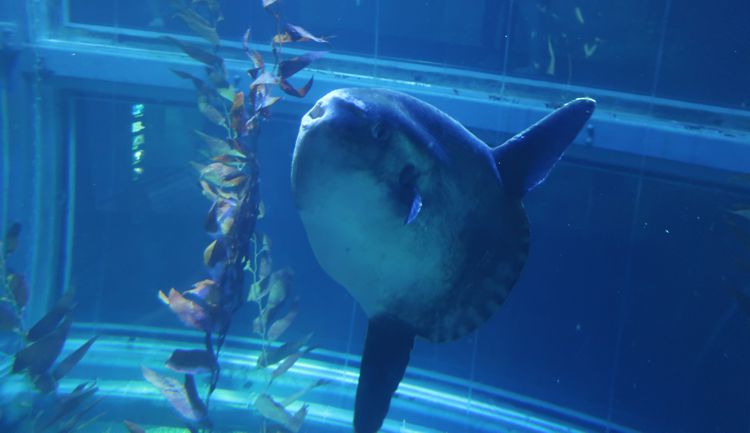
Mola molas are awesome.
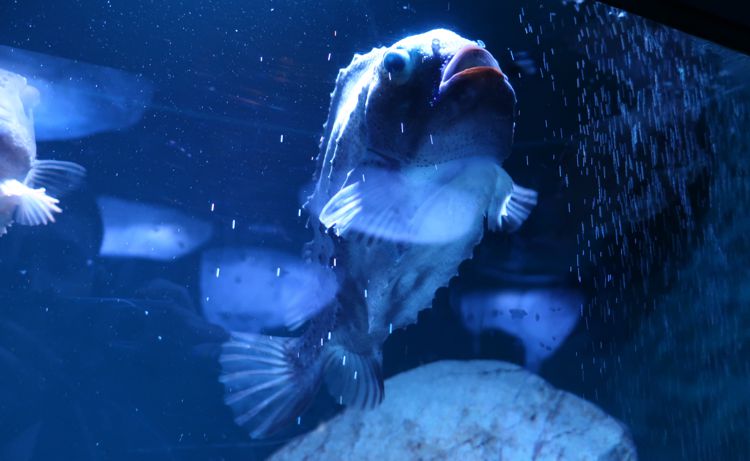
Why… so… serious???
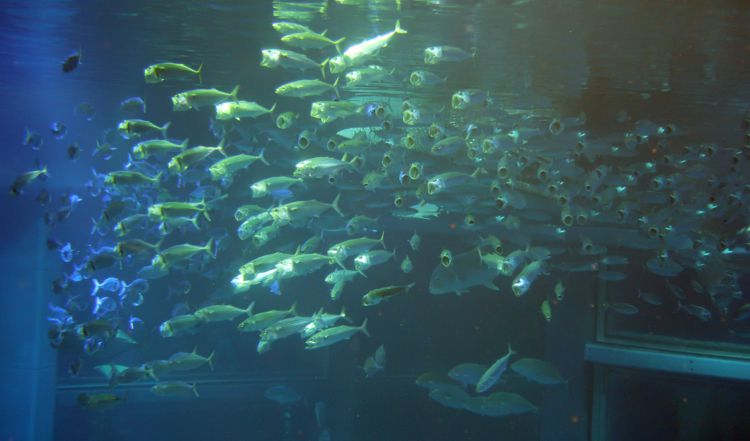
Lots of hungry mouths
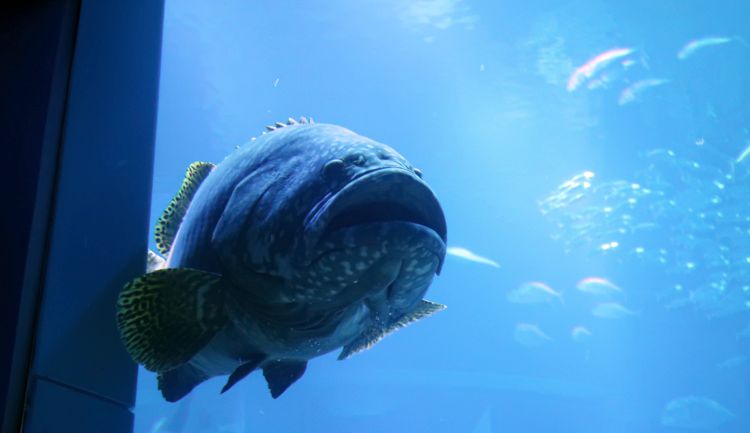
Grouper is one of our favorite open ocean fish. It looks delicious.
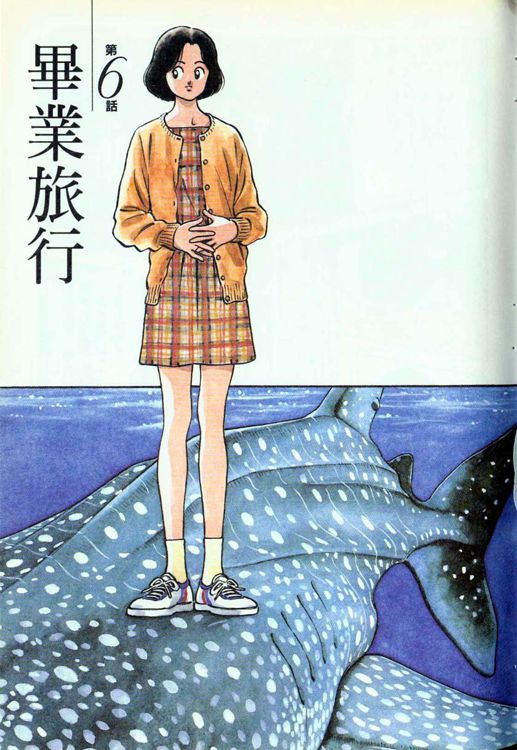
Adachi Mitsuru is one of my favorite manga artists.
In one of his short stories titled Whale Shark, the protagonist is nicknamed Whale Shark and works at the Osaka Aquarium.
There’s never doubt that whale sharks are the star of Osaka Aquarium. The two are basically synonymous. We longed for the moment of seeing these mega ocean creatures with our own eyes. However, when that actually happened, we had a hard time reconciling reality with our exceedingly high expectations. First was the reduced wow factor because these fish in captivity looked like a pygmy version compared to the giants we saw on BBC’s Blue Planet. Second was the adjusted appreciation that these “small” whale sharks were still quite a bit bigger than any fish or mammal we had ever seen in aquariums. Lastly was a sad realization that even the largest tanks in the world were too small compared to these animals’ natural habitat.
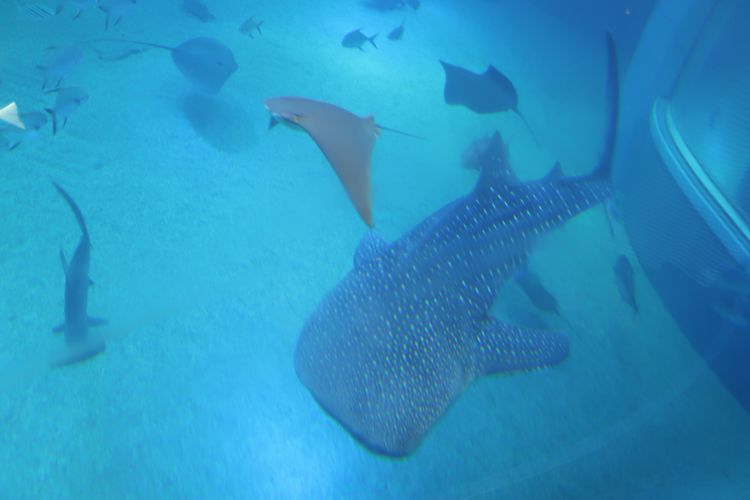
Whale shark
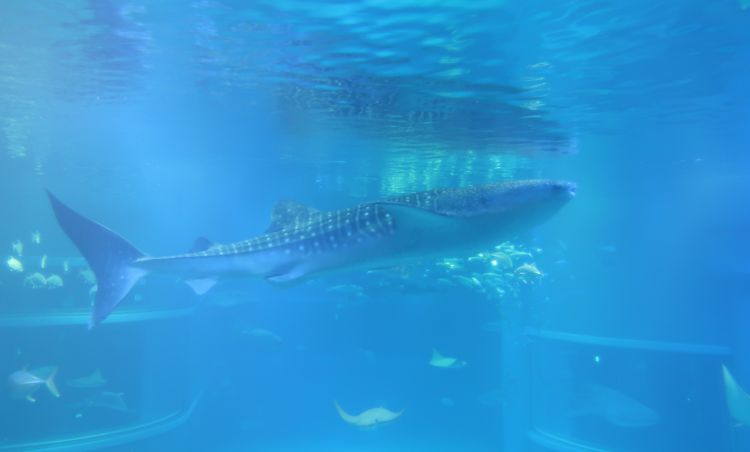
Whale shark
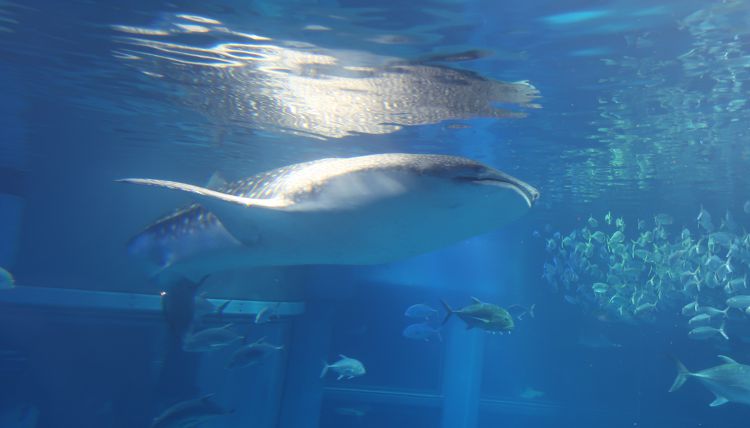
Whale shark
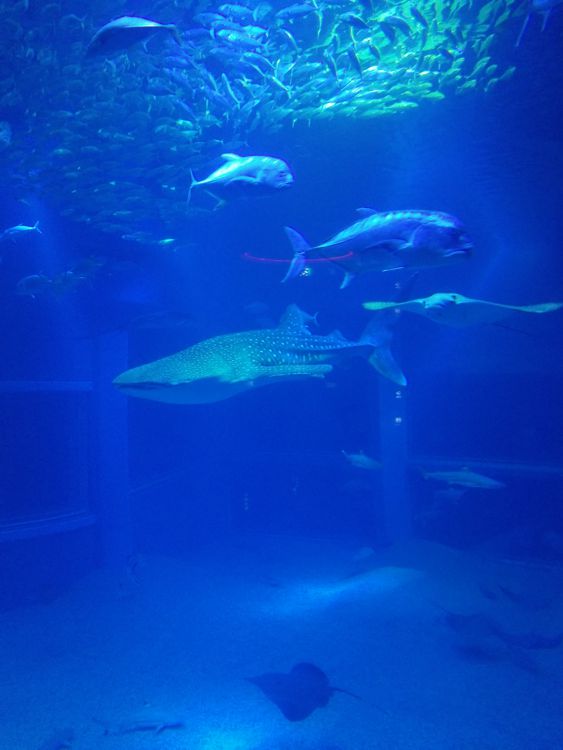
Whale shark and a bunch of other open ocean creatures
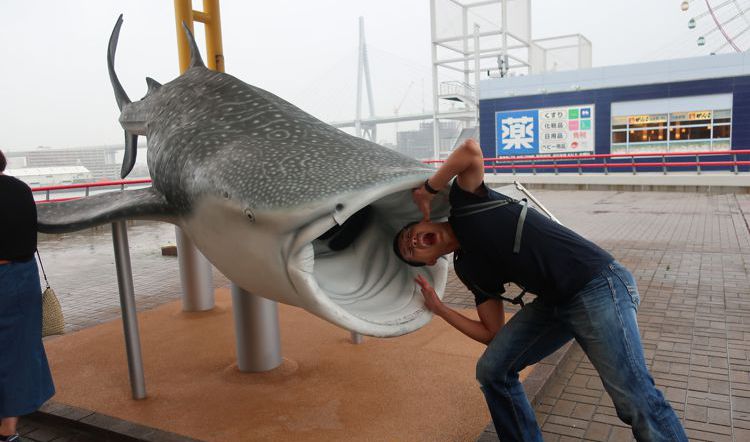
Souvenir shark photo #1
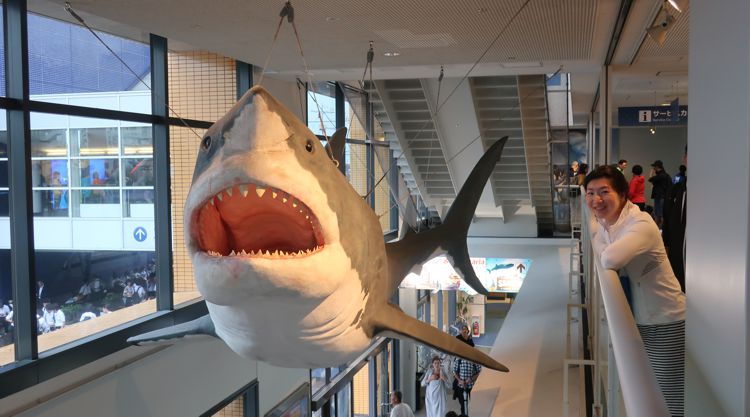
Souvenir shark photo #2
Pacific Islands 2018 Index
- Hawaii Four-O
- Surf & Turf Adventures
- Island Eats
- On To Japan
- Osaka via Shinkansen
- Castle Day
- Deer & Whale Shark
- Osaka Urban Hangouts
- Tasty Japan
- Japan Favorites
Pacific Islands (10/10) – Japan Favorites – Peter's Blog
July 25, 2018 at 9:08 pm[…] Deer & Whale Shark […]